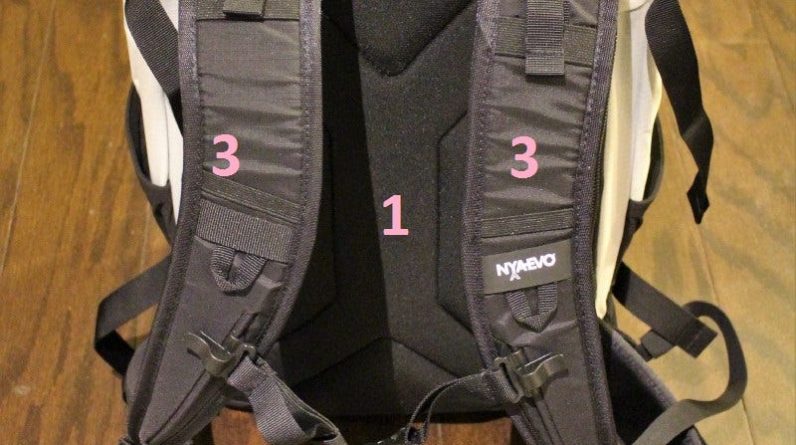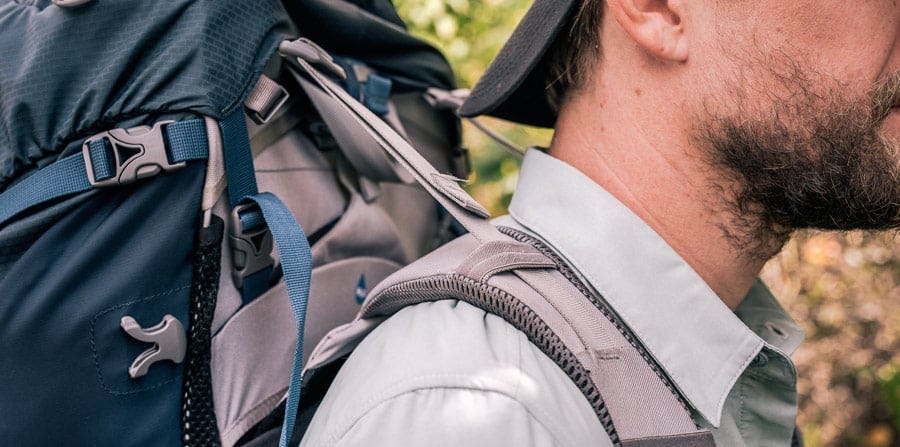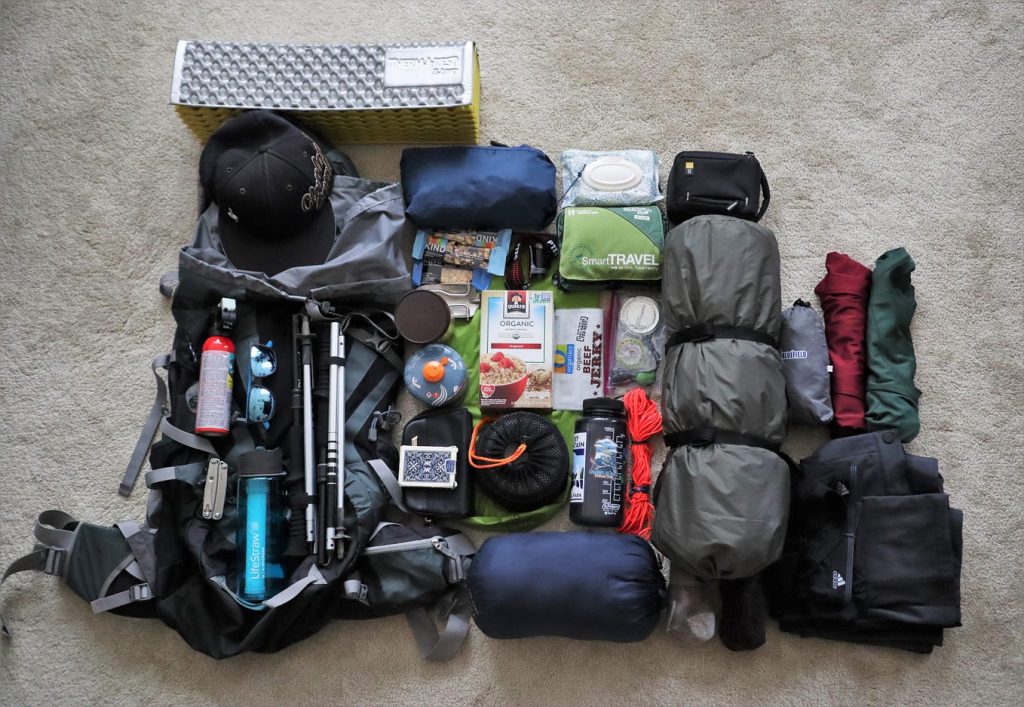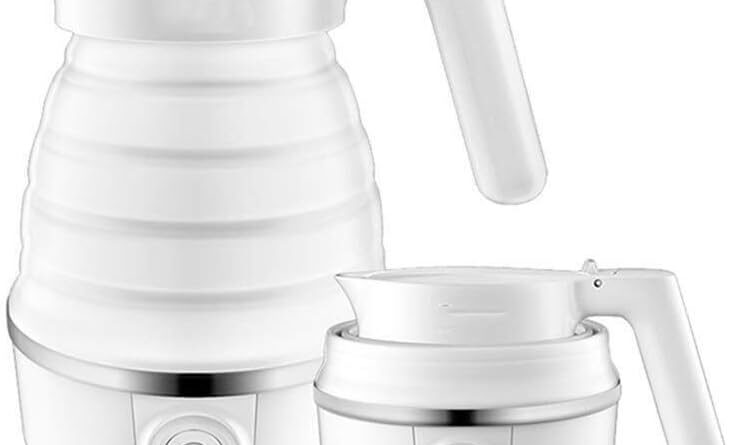
Have you ever struggled to find the perfect fit for your backpack, resulting in discomfort and soreness? Look no further! “Optimizing Comfort and Support: The Ultimate Guide to Adjusting and Fitting a Backpack” is your go-to resource for achieving maximum comfort and support. This comprehensive guide will walk you through the step-by-step process of adjusting and fitting your backpack to ensure a perfect fit every time. Say goodbye to sore shoulders and backaches – with this ultimate guide, you’ll be able to optimize your backpack’s comfort and support, making your next adventure a breeze.

This image is property of miro.medium.com.
Choosing the Right Backpack
When it comes to backpacks, one size does not fit all. Before adjusting and fitting a backpack, it is important to choose the right one for your specific needs and activities. Consider the purpose of the backpack – will you be using it for hiking, traveling, or everyday use? This will help you determine the size and features you require. Understanding the different backpack sizes available is crucial, as it ensures that the backpack can accommodate your belongings comfortably. Additionally, assessing the right material for your backpack is essential. Consider factors such as durability, water resistance, and weight. By taking these factors into account, you can select the most suitable backpack for your needs.
Adjusting Shoulder Straps
Having correctly adjusted shoulder straps can significantly impact your comfort and overall experience while carrying a backpack. To begin, determine the correct strap length to avoid discomfort or strain on your shoulders. Proper padding and thickness on the shoulder straps are important as they help distribute the weight of the backpack evenly. This prevents the straps from digging into your skin and causing discomfort. Additionally, ensuring that the shoulder straps are securely fastened is crucial for stability and support.

This image is property of miro.medium.com.
Fitting the Torso Length
The torso length of your backpack plays a vital role in ensuring a comfortable fit. To measure your torso length, start from the base of your neck and measure downwards to the top of your hips. By adjusting the backpack frame accordingly, you can achieve a snug fit that feels tailored to your body. Pay attention to the backpack’s height and make sure it rests comfortably on your back without hanging too low or riding up too high.
Positioning and Adjusting the Hip Belt
The hip belt is responsible for transferring the weight from your shoulders to your hips, effectively distributing the load. To find the right hip belt size, measure around your hips at their widest point. Once you have the correct size, position the hip belt just above the hips, ensuring that it is snug but not overly tight. Adjusting the tension of the hip belt is crucial to optimizing comfort and support. By adjusting it to the right tension, you can find the perfect balance between stability and freedom of movement.

This image is property of miro.medium.com.
Organizing and Adjusting the Load
The way you organize and adjust the load in your backpack can greatly impact your overall comfort while carrying it. Balancing the weight distribution ensures that there are no unnecessary strains on your body. Heavier items should be placed closer to your back, while lighter items can be positioned towards the top or sides of the backpack. Utilize compression straps to secure and stabilize the load, preventing it from shifting while you are on the move. Make full use of both internal and external pockets to keep your belongings organized and easily accessible. Lastly, consider attaching any external gear to the designated attachment points, allowing you to carry additional items without compromising your comfort.
Fine-Tuning the Fit: Sternum Strap
The sternum strap is often overlooked, but it plays an important role in stabilizing the backpack and improving overall comfort. The correct positioning of the sternum strap is just below your collarbone. Adjust the strap tension to a comfortable level, ensuring that it is snug enough to prevent the shoulder straps from sliding off your shoulders. By utilizing the sternum strap, you can distribute the weight evenly across your chest and shoulders, reducing strain and promoting stability.

This image is property of www.salomon.com.
Adjusting the Load Lifters
Load lifters are small straps located on the upper part of the backpack’s shoulder straps. They are responsible for adjusting the angle at which the backpack sits on your back. Understanding how to properly use load lifters is essential for achieving an optimal fit. Start by ensuring that the load lifters are securely fastened, then adjust the angle to find the most comfortable position for your shoulders and back. Modifying the load lifter angle can significantly impact weight distribution and your overall comfort while wearing the backpack.
Customizing for Comfort: Adjusting the Back Panel
The back panel is an essential component of a backpack that contributes to comfort and support. Properly positioning the back panel is crucial for achieving an optimal fit. It should rest comfortably against your back, with minimal gaps or pressure points. Some backpacks offer the option to modify the back panel contour, allowing you to tailor it to the natural curve of your back. This customization ensures maximum comfort and support, reducing strain and discomfort during extended periods of wear. Additionally, adjusting ventilation features on the back panel can help regulate airflow and prevent excessive sweating.

This image is property of www.kensington.com.
Checking for Freedom of Movement
A properly fitted backpack should not restrict your movement, allowing you to maintain agility and mobility. Test the backpack’s fit by checking your arm mobility. When moving your arms freely, they should not be hindered or restricted by the backpack’s shoulder straps or any other components. Additionally, evaluate the clearance between the top of the backpack and the back of your head. You should have enough space to move your head comfortably without any interference. Lastly, ensure that the backpack does not restrict your lower body movement, especially while walking or engaging in physical activities.
Additional Considerations
While adjusting and fitting a backpack is essential for maximum comfort and support, there are other factors to consider as well. Take into account the climate and weather conditions you will be encountering, as this may affect the type of backpack and additional features you require. If you will be navigating varied terrain or engaging in specific activities, such as hiking or biking, consider backpacks designed specifically for those purposes. When packing your essentials, prioritize items that are essential for your trip or activity, allowing you to minimize unnecessary weight. Regularly inspect and maintain your backpack, making any necessary adjustments to ensure its longevity and continued comfort.
In conclusion, properly adjusting and fitting a backpack is crucial for optimizing comfort and support. By following the guidelines outlined above, you can ensure that your backpack fits securely and distributes weight evenly. Remember to consider your specific needs and activities, choose the right backpack size and material, and pay attention to the adjustments of shoulder straps, torso length, hip belt, load distribution, sternum strap, load lifters, back panel, and freedom of movement. These steps will ensure that your backpack becomes a reliable companion on all your adventures, providing you with maximum comfort and support.






